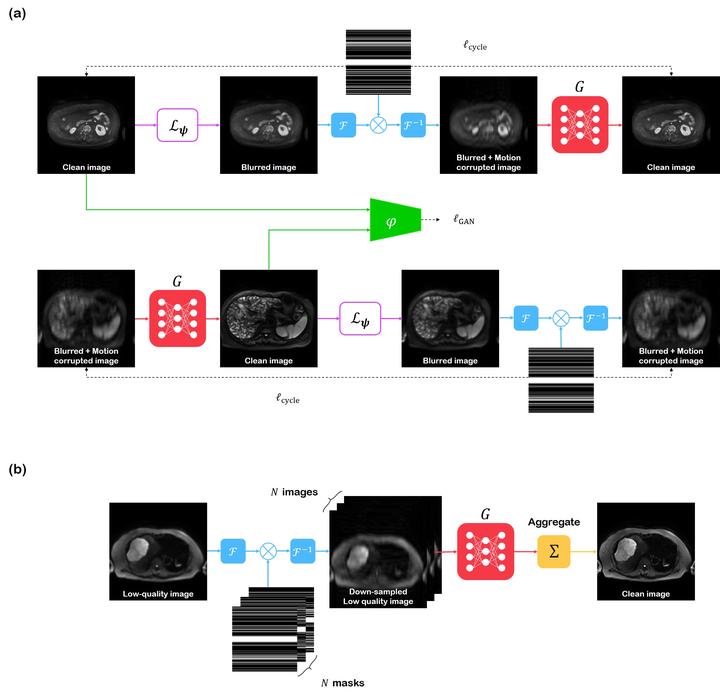Simultaneous super-resolution and motion artifact removal in diffusion-weighted MRI using unsupervised deep learning
 Image credit: Hyungjin Chung
Image credit: Hyungjin ChungAbstract
Diffusion-weighted MRI is nowadays performed routinely due to its prognostic ability, yet the quality of the scans are often unsatisfactory which can subsequently hamper the clinical utility. To overcome the limitations, here we propose a fully unsupervised quality enhancement scheme, which boosts the resolution and removes the motion artifact simultaneously. This process is done by first training the network using optimal transport driven cycleGAN with stochastic degradation block which learns to remove aliasing artifacts and enhance the resolution, then using the trained network in the test stage by utilizing bootstrap subsampling and aggregation for motion artifact suppression. We further show that we can control the trade-off between the amount of artifact correction and resolution by controlling the bootstrap subsampling ratio at the inference stage. To the best of our knowledge, the proposed method is the first to tackle super-resolution and motion artifact correction simultaneously in the context of MRI using unsupervised learning. We demonstrate the efficiency of our method by applying it to both quantitative evaluation using simulation study, and to in vivo diffusion-weighted MR scans, which shows that our method is superior to the current state-of-the-art methods. The proposed method is flexible in that it can be applied to various quality enhancement schemes in other types of MR scans, and also directly to the quality enhancement of apparent diffusion coefficient maps.